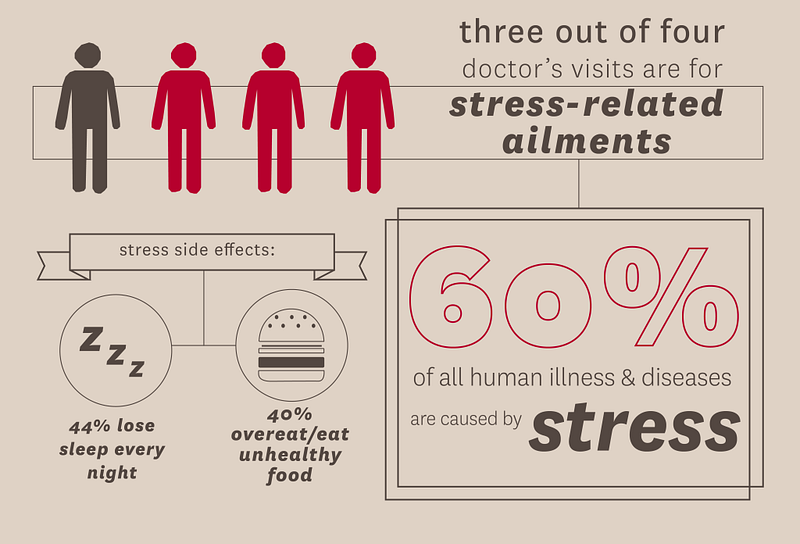Sip of Chill
A new market prospers from selling stress relief by the bottle
STORY BY MADELINE MOHN | ILLUSTRATION BY EVAN YAMADA | INFOGRAPHIC BY HANNAH AMUNDSON
He shakes the bottle of Dream Water again, reluctant to open it. Mason Colborn’s laugh has an edge, but he pops the cap with a shrug that says there’s only one way to find out.
“What does a Snoozeberry taste like, anyway?” he says.
Once it’s open, it’s gone in seconds. The empty bottle is set out of reach for admiration.
Turns out a Snoozeberry tastes a lot like Crystal Light.
Dream Water is one of a number of products that constitute an emerging market of non-alcoholic relaxation beverages. Sold in powder and liquid form, Dream Water contains a combination of acids and nutrients intended to calm the drinker to a tranquil pre-sleep state.
“Technically, this is a sleep aid,” Mason says. “It’ll probably relax me, but it might also put me out.”
Mason is in constant motion and everything about him moves fast. The seated position he’s assumed is rare and even as he settles in for a relaxing evening, he’s tapping his thumb vigorously on the armrest.
Stress is a serious health concern in the United States. The American Institute of Stress reported that one in five Americans experience extreme stress — the kind of stress that causes disease, insomnia, over-eating and a host of other ailments. With 44 percent of Americans reporting that they feel more stress than they did five years ago, stress relief is big business.
Mason, who attributes most of his stress to family disputes, is an insomniac. Beer and video games are his most used stress relief tools and he usually listens to podcasts at night to get to sleep. It’s been 15 minutes since his first bottle of Dream Water, but he doesn’t feel tired yet.
This particular beverage is a blend of the neurotransmitter gamma-aminobutyric acid (GABA), which slows down impulses in the nervous system, the sleep-regulating hormone melatonin, and tryptophan, which stimulates the production of serotonin in the brain.
It’s supposed to take effect within 30 minutes. Mason is rubbing his eyes, but he says it’s because they itch. He opens and empties a second bottle. This one seems to have the promised effect. He slouches in his seat, his thumb-tapping quiets and a gaze sets in.
Next to Mason on the couch is his roommate, trying to study. Ethan Metzger, “E” to his friends, is a solidly-built recreation enthusiast. Tonight, he’s sporting a bathrobe over a pair of knee-baring neon blue shorts. In for the evening after a lazy Sunday, he sips a relaxation concoction called Neuro Bliss with his laptop on his knees.

Neuro Drinks is a company that has been around for nearly 10 years. Its stress-relieving drink, Neuro Bliss, contains L-theanine, which stimulates serotonin and dopamine production. Chamomile is also included with a few other natural chemicals that may reduce cognitive dysfunction and stimulate alertness.
“It looks like it should be an energy drink,” Ethan says, pointing out the bright colors on the bottle. But Bliss is more like an anti-energy drink.
Ethan says the stress in his life is mostly deadline-induced, not atypical for a college junior. Stress-related disorders are among the most common on college campuses, with 80 percent of students reporting they experience daily stress. For instance, Ethan has an essay due at midnight on a book he hasn’t finished reading, and it’s almost 8 p.m.
The beverage seems to improve his focus. He’s concentrating more on the schoolwork in front of him, instead of the WWE match he’s been watching on the side. Soon the bottle is gone and Ethan acknowledges that it may have helped him study, even if the placebo effect influenced his spike of alertness.
“I’d buy it — it tastes great,” he says. “I’d take it midday when I needed a study boost.”
Students like Ethan who struggle with the afternoon energy slump tend to refuel with caffeine and sugar, but relaxation beverages are offering the opposite solution with surprising success.
The industry of relaxation beverages has seen revenue growth of nearly 25 percent since 2011, suggesting an existing demand, especially in the U.S. Studies indicate America’s workers take the fewest vacations and its students experience the most social stress.The drinks’ market share is attributed to their effectiveness. The ingredients alter the drinker’s brain chemistry, but only temporarily.
Whether they work or not, it’s clear that these products, like their caffeinated counterparts, are just a quick fix for an even bigger problem.
It’s about 10 p.m. and Mason and Ethan are still on the couch. It’s a serene moment, quiet and content. Ethan’s unfinished essay is forgotten while Mason considers a rare nap. If only for a moment, the drinks seem to have delivered.
